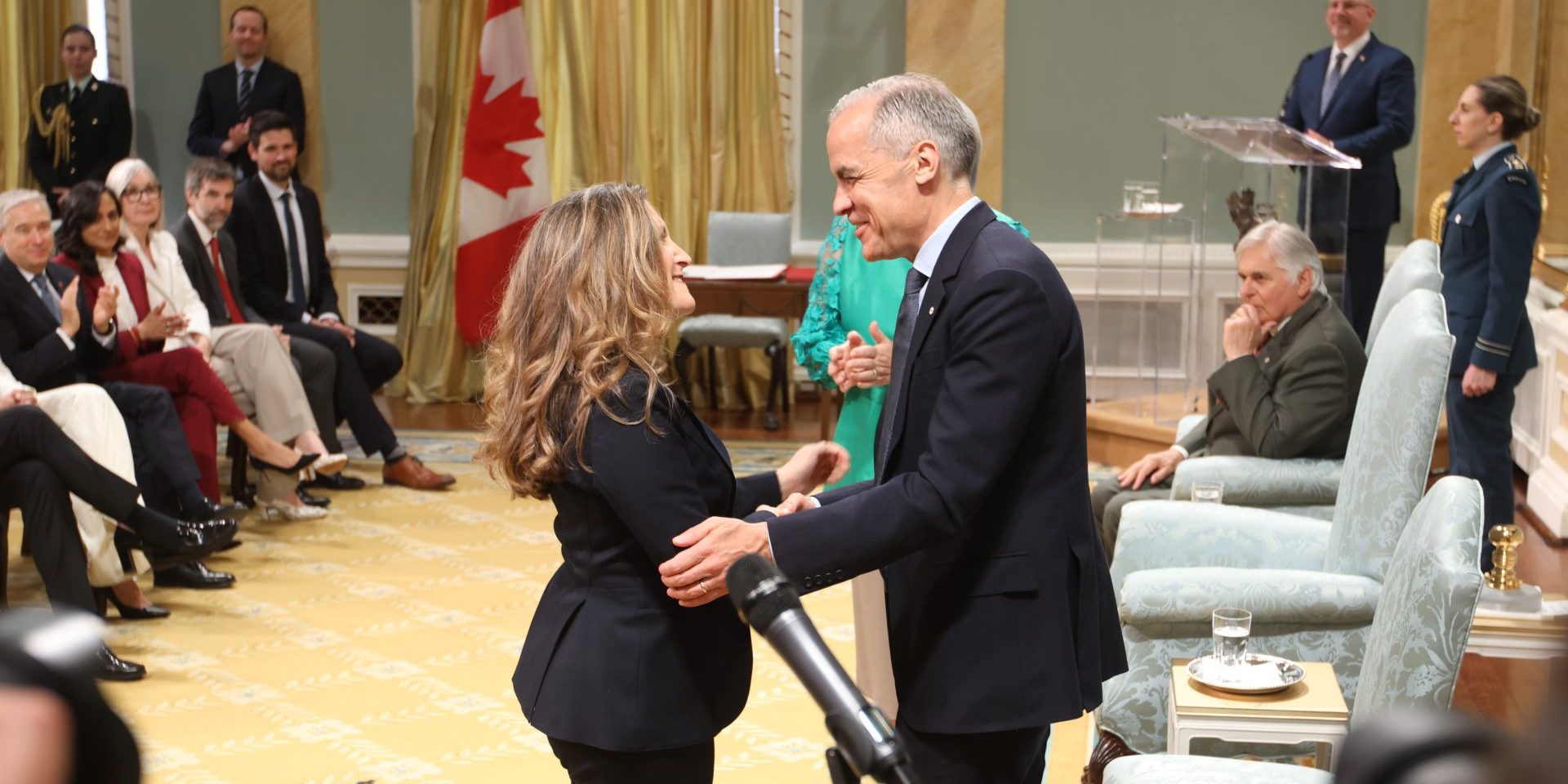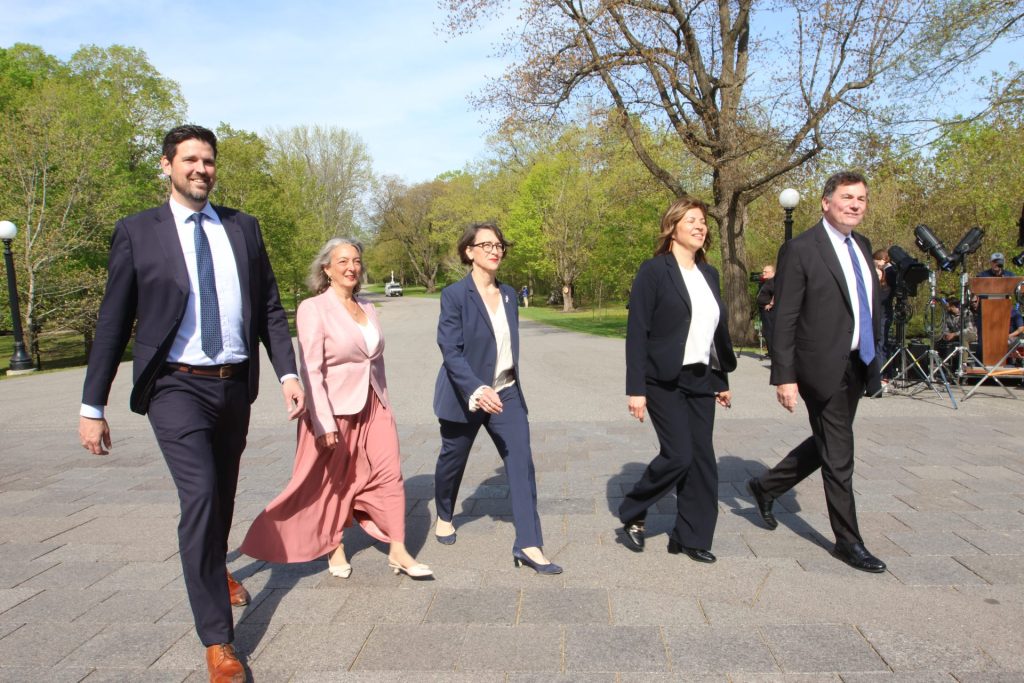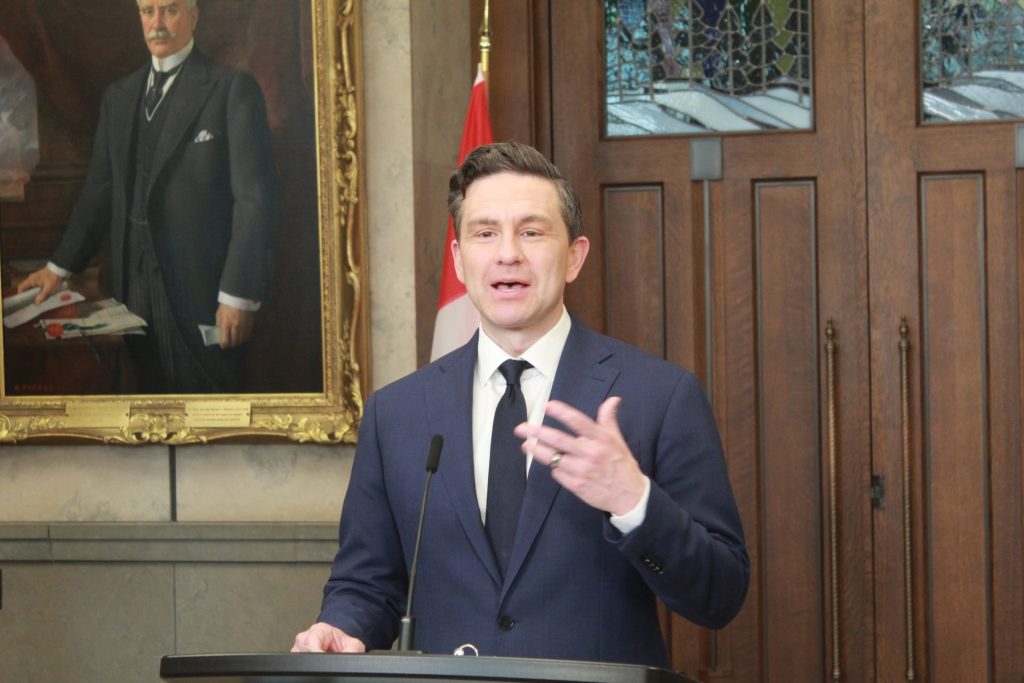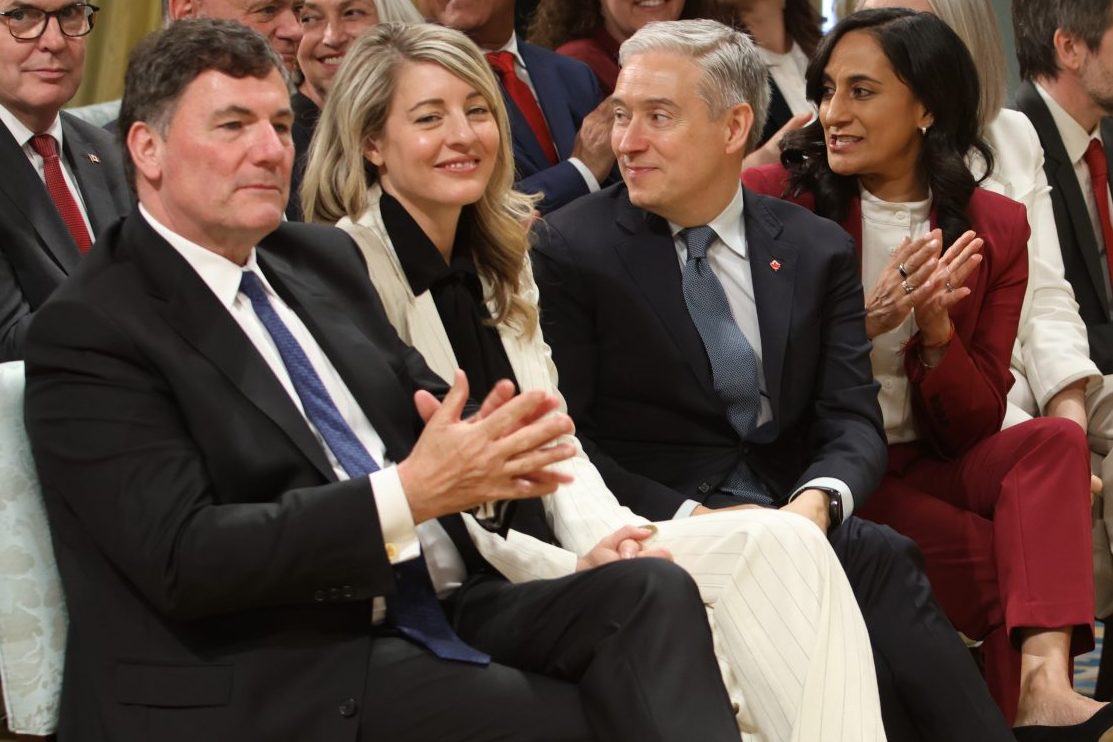Carney’s new cabinet balances change with experience, analysts say

After an election campaign in which Prime Minister Mark Carney went to great lengths to differentiate himself from former prime minister Justin Trudeau’s Liberal era, his first post-election cabinet balances fresh faces with experienced veterans in a major shakeup of his senior team, analysts say.
“He’s been balancing between change and experience, and distancing his brand from that of his predecessor,” former federal Conservative communications strategist Yaroslav Baran, now a partner with Pendulum Group, told The Hill Times shortly after Carney (Nepean, Ont.) unveiled his senior team at a morning swearing-in ceremony on May 13. His 28-member cabinet has an equal number of men and women ministers, and has a two-tiered organizational structure with another 10 secretaries of state.
Baran noted the Finance, Foreign Affairs, Industry, Defence, Justice, International Trade, Transport, and Public Safety files—largely considered to be the most senior portfolios—are all in different hands compared to former prime minister Trudeau’s final cabinet.
And while Carney opted to keep Finance Minister François-Philippe Champagne (Saint Maurice–Champlain, Que.) and Transport and Internal Trade Minister Chrystia Freeland (University–Rosedale, Ont.) in their respective roles he named for his pre-election cabinet, they represent the only key files that are in the same hands prior to Tuesday’s shuffle. Fisheries remains with Joanne Thompson (St. John’s East, N.L.) and the new “Canadian identity and culture” ministry—formerly heritage—is still with Steven Guilbeault (Laurier–Sainte-Marie, Que.).
Baran said the weightiest portfolios are all the responsibility of experienced and seasoned ministers who have most been shuffled around, including Canada-U.S. Trade Minister Dominic LeBlanc (Beauséjour, N.B.), Foreign Affairs Minister Anita Anand (Oakville East, Ont.), National Defence Minister David McGuinty (Ottawa South, Ont.), and Industry Minister Mélanie Joly (Ahuntsic–Cartierville, Que.). Among the exceptions is the international trade portfolio, which was taken over by Maninder Sidhu (Brampton East, Ont.), who has been re-elected three times and had served in several parliamentary secretary roles since 2021, including most recently for the ministry he now runs.

“So it’s change, but it’s also maintaining experience where you need it most, in those senior-most portfolios,” Baran said.
Conservative Leader Pierre Poilievre’s response on May 13 was initially agreeable, saying his party would support the government when it was taking the right approach and not “reflexively” oppose the government.
“When they are right, we will stand with them. When they are wrong, we will oppose them,” he said.
But Poilievre quickly pivoted to attack Carney’s choices for cabinet, which included a dozen Trudeau-era ministers. Freeland was a top target as the former finance minister who quit cabinet in December 2024 just before the Liberals presented a ballooning deficit.
Poilievre also slammed Carney for keeping former environment minister Guilbeault, who now also oversees official languages. Poilievre described Guilbeault as having a “radical green agenda,” and also turned his attention to returning minister Sean Fraser (Central Nova, N.S.) who didn’t make Carney’s first pre-election cabinet and held immigration and housing files under Trudeau—both areas where Poilievre said the Liberals failed Canadians. Fraser is now Canada’s justice minister and the attorney general.
“It seems he is the master of failing upward,” Poilievre quipped.

New ministers, too, weren’t spared from Poilievre, who he said still “bring with them bad Liberal ideas.” He called out former Vancouver mayor and new Housing and Infrastructure Minister Gregor Robertson (Vancouver Fraserview–South Burnaby, B.C.), pointing to the high housing prices in the city Robertson led as proof he was a poor choice to lead the file.
But Liberal strategist Greg MacEachern said the cabinet shuffle brought about “a surprising amount of change,” and said he thinks it’s clear that Carney is making “a distinct break” from Trudeau.
The team includes 12 people from Carney’s first cabinet named in March; Fraser, who only had a few months off from the senior Liberal team; and 15 MPs who have never served in cabinet. Half of the 10 secretaries of state are rookie Members of Parliament.
“You’re always going to have some experienced hands that you can bring in,” said MacEachern, a principal and founder at KAN Strategies. “I think political watchers were actually surprised at the amount of change.”
Gilles Levasseur, a law and business professor at the University of Ottawa, noted about 35 per cent of the ministerial roles touch on the economy.
Meanwhile, MacEachern said the emphasis on Canada’s economy isn’t just a defensive posture, but rather a follow-through of Carney’s election promises to weather the storm of uncertainty and disruption caused by United States President Donald Trump’s trade war.
“It’s about building a stronger economy for Canada, and it also doesn’t forget the challenges that were pre-existing, like housing,” MacEachern said.
That messaging was evident in Carney’s responses at the post-shuffle press conference.
“We are at the start of an industrial transformation,” Carney told gathered reporters on May 13, adding that the greatest “opportunity” for Canada is to reduce interprovincial trade barriers. He said his government will grow an economy that “creates jobs, increases wages, and is resilient in the face of economic shock.”
Perhaps unsurprisingly, given the ongoing trade war, Carney carved out the responsibility of Canada-U.S. trade and made it the responsibility of longtime minister LeBlanc, while giving the international trade file to Sidhu.

That means LeBlanc will be focused on issues south of the border, while Sidhu can work on advancing free trade agreements internationally or revamping existing ones, Baran said.
He added that he expects to see a lot of co-operation between LeBlanc—whose job title also includes intergovernmental affairs and “one Canadian economy”—and Freeland’s internally focused responsibilities.
“[LeBlanc] is responsible for one Canadian economy, she is responsible for internal trade. I honestly don’t know the difference between those two things,” Baran said.
First-time MP Tim Hodgson (Markham–Thornhill, Ont.) was tapped to oversee Natural Resources and Energy, both key portfolios in a resource-rich country locked in a trade war with its biggest partner.
And while Hodgson may be a political newcomer, he has an extensive finance background, was special adviser to Carney when he was governor of the Bank of Canada, and was formerly CEO of Goldman Sachs Canada.
“The portfolio is now in the hands of somebody with significant credits, significant accomplishment prior to being elected,” Baran said.
MacEachern agreed, saying “when you look at the individuals’ experience, and what they’ve been tasked with, they may not be experienced as MPs, but they have significant experience to tap into.”
Carney’s cabinet includes 10 secretaries of state, who “will provide dedicated leadership on key issues,” the PMO said. Secretaries of state are focused on priorities within a minister’s portfolio, like rural development, defence procurement, seniors, and more.
Ruby Sahota (Brampton North–Caledon, Ont.) has been tapped as the secretary of state for combatting crime, something that could be a response to what MPs heard on the campaign trail, MacEachern said.
Baran agreed the priorities laid out for these junior ministers are a continuation of the election campaign, when Carney ran a “small-c conservative platform” to differentiate from some of Trudeau’s less popular policies.
“Many people would argue that he essentially ran a red Tory campaign,” Baran said. “That means paying attention to things like oil and gas, being tough on crime—which is normally seen as being the purview of the Conservatives. This new secretary of state position is a continuation of that.”
While the tiered cabinet structure hasn’t been seen since Trudeau was elected in 2015, Carney’s use of it has historical precedent.
“It’s a reversion to the traditional cabinet structure of the last 60 years of Canadian political history,” Baran said, adding former prime ministers Stephen Harper, Paul Martin, Jean Chrétien, Kim Campbell, Brian Mulroney, John Turner, Pierre Trudeau, and Lester Pearson all had a two-tier structure.
Levasseur said having senior and junior roles is similar to the organizational structure of a private-sector firm.
“[Carney] doesn’t want too many ministers coming to him and speaking about files,” he said. “Secretaries of state will be given certain tasks they need to deliver. If they don’t deliver, they’re out, and if they actually perform, they can move up in the pipeline.”
mglass@hilltimes.com
The Hill Times






 LICENSING
LICENSING PODCAST
PODCAST ALERTS
ALERTS













